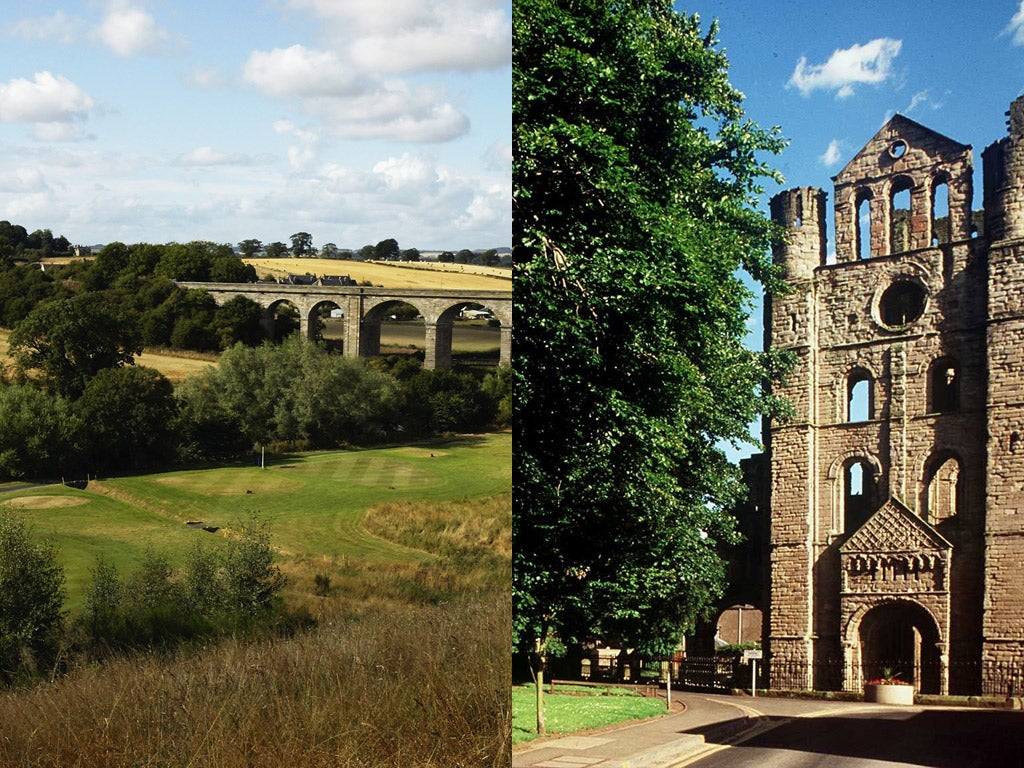Which town is J K Rowling's real Pagford?
Her first adult novel isn't even published yet, but several communities believe they are the setting

Your support helps us to tell the story
From reproductive rights to climate change to Big Tech, The Independent is on the ground when the story is developing. Whether it's investigating the financials of Elon Musk's pro-Trump PAC or producing our latest documentary, 'The A Word', which shines a light on the American women fighting for reproductive rights, we know how important it is to parse out the facts from the messaging.
At such a critical moment in US history, we need reporters on the ground. Your donation allows us to keep sending journalists to speak to both sides of the story.
The Independent is trusted by Americans across the entire political spectrum. And unlike many other quality news outlets, we choose not to lock Americans out of our reporting and analysis with paywalls. We believe quality journalism should be available to everyone, paid for by those who can afford it.
Your support makes all the difference.The pages are not even off the press yet, but already fans of the world's most successful fiction author are speculating feverishly about the real-life inspiration for J K Rowling's first adult novel.
The Casual Vacancy, published in September, charts rivalry and small-time political strife in Pagford, a seemingly tranquil town. While the author is remaining tight-lipped about any real-life inspiration, Kelso in the Scottish Borders this weekend boasted a better claim than other contenders.
Pagford is described in the novel as an "idyll" with a "pretty façade". Kelso fits the bill. The fictional town has a cobbled town square; another tick for Kelso. The town's population of 5,500 appears to be about the right size; and, importantly, as with Pagford, Kelso has a 12th-century abbey. While geographically it is a little far north, that could be Rowling – born in Gloucestershire but now living in Edinburgh – using fictional licence.
Understandably, perhaps, Kelsonians are keen to stake their claim. Ralph Brooks, owner of Ednam House Hotel in Kelso, said: "We certainly have a unique cobbled square, and an abbey – though we're not English. Roxburghe Castle is only half a mile away, and it changed hands between the English and Scottish three times. Kelso is very beautiful: it has green hills and fields, and we have the River Tweed running through."
Isabel Gordon, chairwoman of the Friends of Kelso Museum, said: "It could indeed be Kelso, if it was in Scotland. Kelso developed gradually as a market town because the abbey was there – and the market square may once have been the monks' garden." She said the most scandalous thing to happen in the town was in late 19th century when the council continued charging people a penny to cross the bridge over the River Tweed, despite the bridge having been long paid off.
The details of Rowling's 480-page novel are one of the most tightly guarded secrets in publishing. Little, Brown has revealed that the tale involves a town being ripped apart by a parish council election. Councillor Barry Fairbrother dies in his early forties, and the vacancy for his seat becomes the catalyst for the biggest war the town has seen, with "rich at war with poor, teenagers at war with their parents, wives at war with their husbands, teachers at war with pupils".
Richmond, in North Yorkshire, with Easby Abbey and a cobbled square, is a another contender. Its town clerk, Heather Lawler, said that while it has not lost a young councillor in the past decade, there was the death of a town clerk in his fifties. And the location fits Rowling's description. "We are very picturesque, with beautiful countryside, castle ruins and a fabulous ancient theatre."
She said there was a community feel to the area, as opposed to Rowling's war going on behind net curtains. "People know their neighbours, and as the bus routes get curtailed because of cuts, taxi drivers take the shopping to the door for elderly people."
Charles Wells, town hall keeper, said: "It could well be Richmond. We've got the cobbles, the abbey, two museums. We're one of the main towns on the coast-to-coast walk that starts up at Robin's Hood Bay, and this is All Creatures Great and Small country. We get a lot of tourists."
Tewkesbury, in Gloucestershire, dominated by its 12th-century abbey and close to Rowling's birthplace in Yate, is perhaps one of the most credible contenders. Rowling has previously added reality to her fiction, with the character of Severus Snape being partly based on one of her primary school teachers.
Despite the strife in Pagford, towns will be keen to be associated with Rowling's £620m imagination, especially when the time comes to make the book into a film.
Join our commenting forum
Join thought-provoking conversations, follow other Independent readers and see their replies
Comments